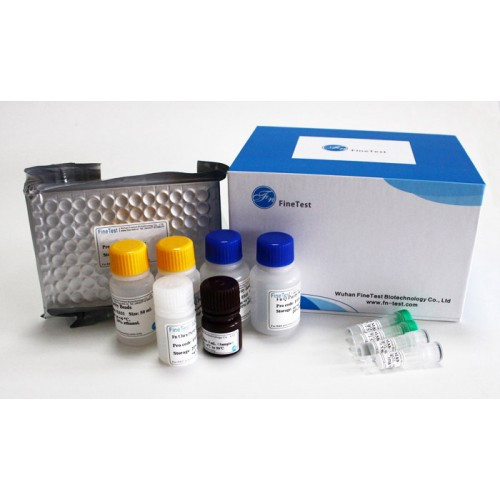Product Description
Recombinant Human Interleukin-36 alpha (IL36A) (Active) is available at Gentaur for Next week Delivery.
Gene Name: IL36A
Alternative Names : Interleukin-36 Alpha; FIL1 Epsilon; Interleukin-1 Epsilon; IL-1 Epsilon; Interleukin-1 Family Member 6; IL-1F6; IL36A; FIL1E; IL1E; IL1F6
Expression Region : 1-158aa
AA Sequence : MEKALKIDTPQQGSIQDINHRVWVLQDQTLIAVPRKDRMSPVTIALISCRHVETLEKDRGNPIYLGLNGLNLCLMCAKVGDQPTLQLKEKDIMDLYNQPEPVKSFLFYHSQSGRNSTFESVAFPGWFIAVSSEGGCPLILTQELGKANTTDFGLTMLF
Sequence Info : Full Length
Tag Info : Tag-Free
Theoretical MW : 17.7 kDa
Storage Buffer : Lyophilized from a 0.2 ?m filtered 20 mM PB, 150 mM NaCl, pH 7.2
Endotoxin Level : Less than 1.0 EU/µg as determined by LAL method.-
Biological Activity : The ED50 as determined by its ability to inhibit IL-8 secretion in A431 human epithelial carcinoma cells is less than 50 ng/ml.
Storage : Short term: -20°C; Long term: -80°C. Minimize freeze and thaw cycles.
Research Area : Immunology
Restriction : For Research Use Only. Not for use in diagnostic procedures, drug use, or for administration to humans or animals.
Relevance : Human Interleukin-36? (IL-36?) is a secreted cytokine that belongs to the Interleukin 1 cytokine family. IL-36? is expressed in the immune system and the fetal brain, but not in other tissues or multiple hematopoietic cell lines. IL-36? is the only IL-1 family member found to be expressed on T-cells. IL-36? and IL-1F8 are involved in the regulation of adipose tissue gene expression. Importantly, IL-36? inhibits PPAR? expression, which may lead to a reduction in adipocyte differentiation suggesting metabolic effects of this cytokine. IL-36?, along with IL-1F8 and IL-1F9, has been shown to act as an agonist by activating the pathway involving NF?B and MAPK in an IL-1Rrp2 dependent manner. This suggest that IL-36? may signal in a similar fashion to IL-1 and IL-18 in having a binding receptor which upon ligation, recruits a second receptor as a signaling component, forming an active heterodimeric receptor complex.
Function : Cytokine that binds to and signals through the IL1RL2/IL-36R receptor which in turn activates NF-kappa-B and MAPK signaling pathways in target cells linked to a pro-inflammatory response. Part of the IL-36 signaling system that is thought to be present in epithelial barriers and to take part in local inflammatory response; similar to the IL-1 system with which it shares the coreceptor IL1RAP. Seems to be involved in skin inflammatory response by acting on keratinocytes, dendritic cells and indirectly on T-cells to drive tissue infiltration, cell maturation and cell proliferation. In cultured keratinocytes induces the expression of macrophage, T-cell, and neutrophil chemokines, such as CCL3, CCL4, CCL5, CCL2, CCL17, CCL22, CL20, CCL5, CCL2, CCL17, CCL22, CXCL8, CCL20 and CXCL1, and the production of proinflammatory cytokines such as TNF-alpha, IL-8 and IL-6. In cultured monocytes upregulates expression of IL-1A, IL-1B and IL-6. In myeloid dendritic cells involved in cell maturation by upregulating surface expression of CD83, CD86 and HLA-DR. In monocyte-derived dendritic cells facilitates dendritic cell maturation and drives T-cell proliferation. May play a role in proinflammatory effects in the lung.
Involvement in disease :
Subcellular location : Secreted
Protein Families : IL-1 family
Tissue Specificity : Expressed in immune system and fetal brain, but not in other tissues tested or in multiple hematopoietic cell lines. Predominantly expressed in skin keratinocytes but not in fibroblasts, endothelial cells or melanocytes. Increased in lesional psoriasis skin.
Paythway :
Uniprot ID : Q9UHA7
 Euro
Euro
 British Pound
British Pound
 US Dollar
US Dollar








